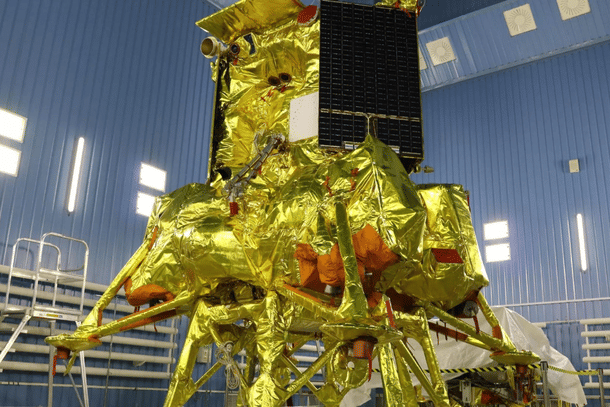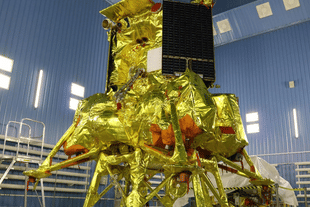World
Luna-25 Moon Crash: Russian Space Agency Chief Blames Engine Failure, Decades Of Inactivity In Lunar Exploration
Swarajya Staff
Aug 22, 2023, 01:53 PM | Updated 01:54 PM IST
Save & read from anywhere!
Bookmark stories for easy access on any device or the Swarajya app.


Russia's space agency chief has said that the Luna-25 spacecraft crashed into the moon after its engines failed to shut down correctly.
He also blamed the failed lunar landing attempt on the country's lack of lunar exploration in recent decades.
Scheduled to land on 21 August, the unmanned Luna-25 aimed to be the first spacecraft to touch down on the moon's south pole. This area of the moon is of great interest to scientists as it is believed to hold significant reserves of frozen water and valuable elements.
According to Roscosmos Director General Yury Borisov, the spacecraft's engines were activated to place Luna-25 into a "pre-landing orbit".
However, they failed to shut down properly, resulting in the lander crashing onto the moon.
Borisov said that instead of the planned 84 seconds, the engines operated for 127 seconds.
"This was the main reason for the emergency,” Borisov told Russian state news channel Russia 24.
The Luna-25 orbit adjustment was numerously tested on a ground-based flight simulator before it was uploaded into the automatic station, the Roscosmos chief said, Russian news agency TASS reported.
This lunar mission marked Russia's first since 1976, when it was part of the Soviet Union. Notably, only three countries have achieved successful moon landings: the Soviet Union, the United States, and China.
“The negative experience of interrupting the lunar program for almost 50 years is the main reason for the failures,” Borisov said.
According to Borisov, ending the lunar programme now would be the "worst decision ever" for Russia.
The Luna-25 was in a race with India's Chandrayaan, launched on 14 July, to be the first to reach the south pole of the moon. Both were expected to reach the moon between 21 August and 23 August.
In 2019, an Indian attempt to land at the moon's south pole ended when the spacecraft crashed into the lunar surface.
Luna-25 was launched on 10 August from Russia's Vostochny Cosmodrome in the Far East.
Prior to the launch, Roscosmos, the Russian space agency, aimed to demonstrate Russia's capability to deliver payloads to the moon and secure guaranteed access to its surface.
However, following the crash, the Russian space agency said the moon mission was about ensuring long-term “defense capability” as well as “technological sovereignty".
“The race to develop the moon's natural resources has begun,” Borisov said on Monday.
“In the future, the moon will become an ideal platform for the exploration of deep space," he added.
Initially, the Luna-25 mission planned to include a small moon rover. However, the idea was abandoned in order to reduce the weight of the spacecraft for improved reliability.
The lunar south pole holds great significance for scientists, who believe that the polar craters, which are always in shadow, could potentially contain frozen water within the rocks.
This frozen water could be transformed into air and rocket fuel by future explorers.




